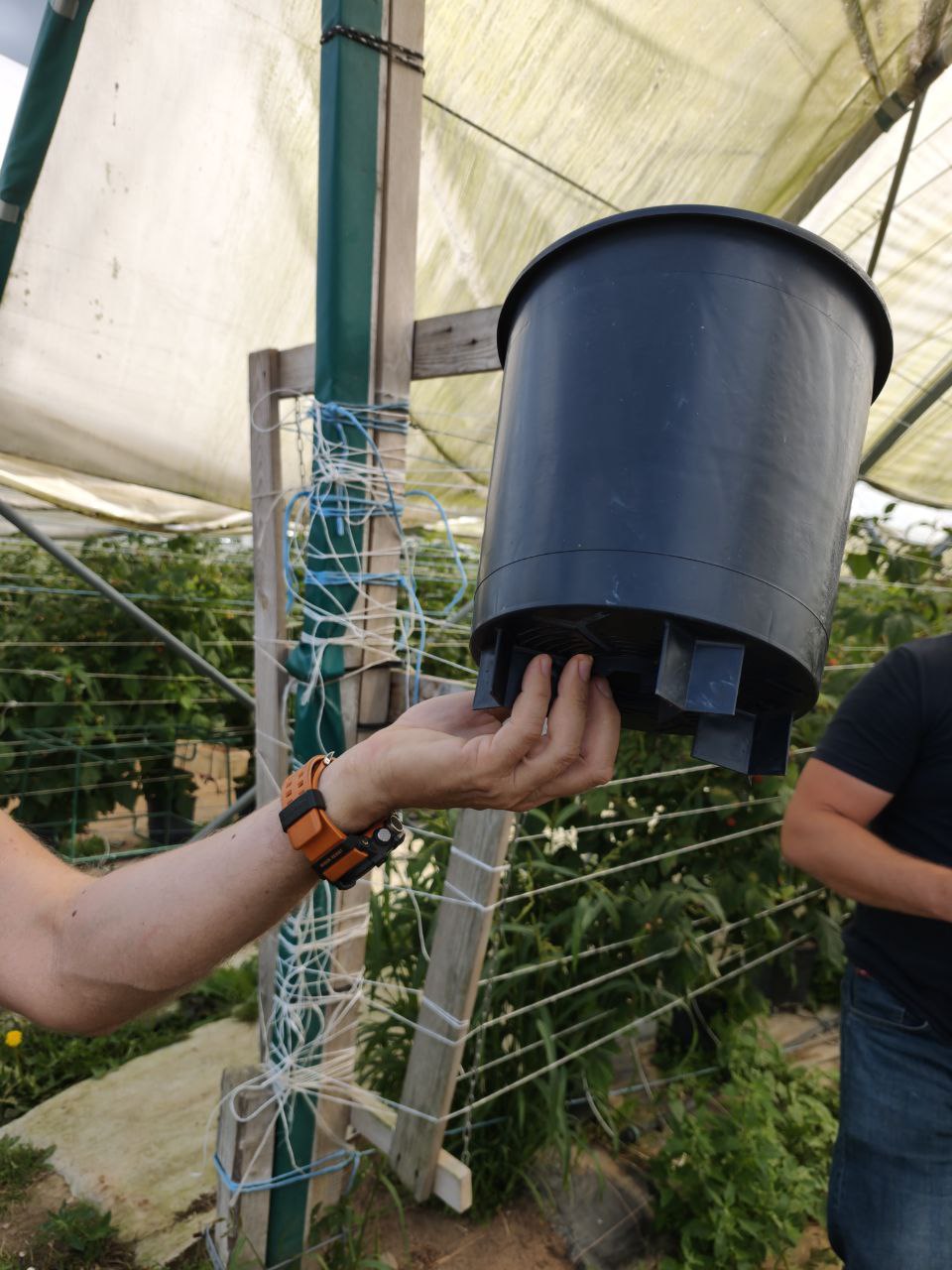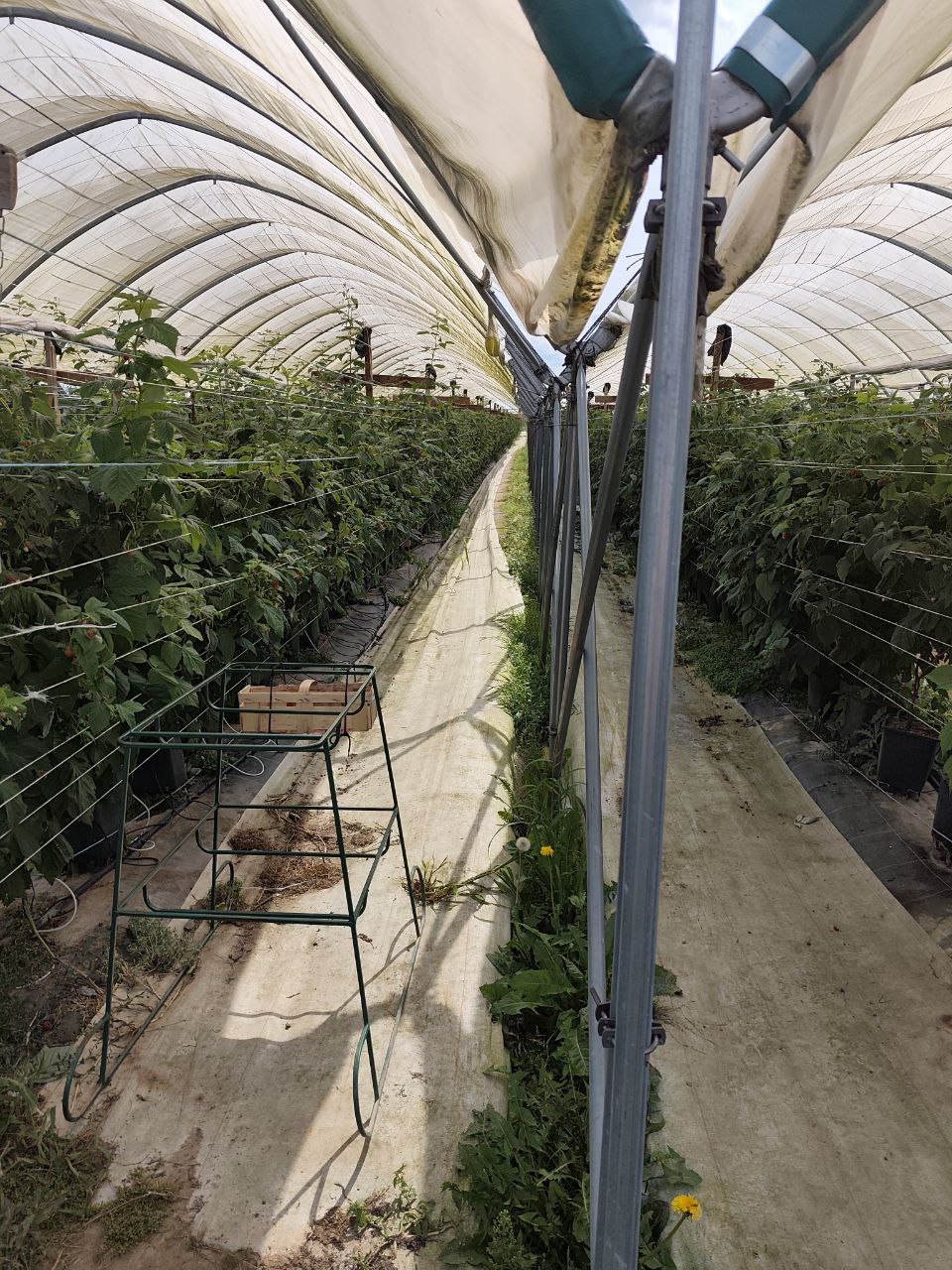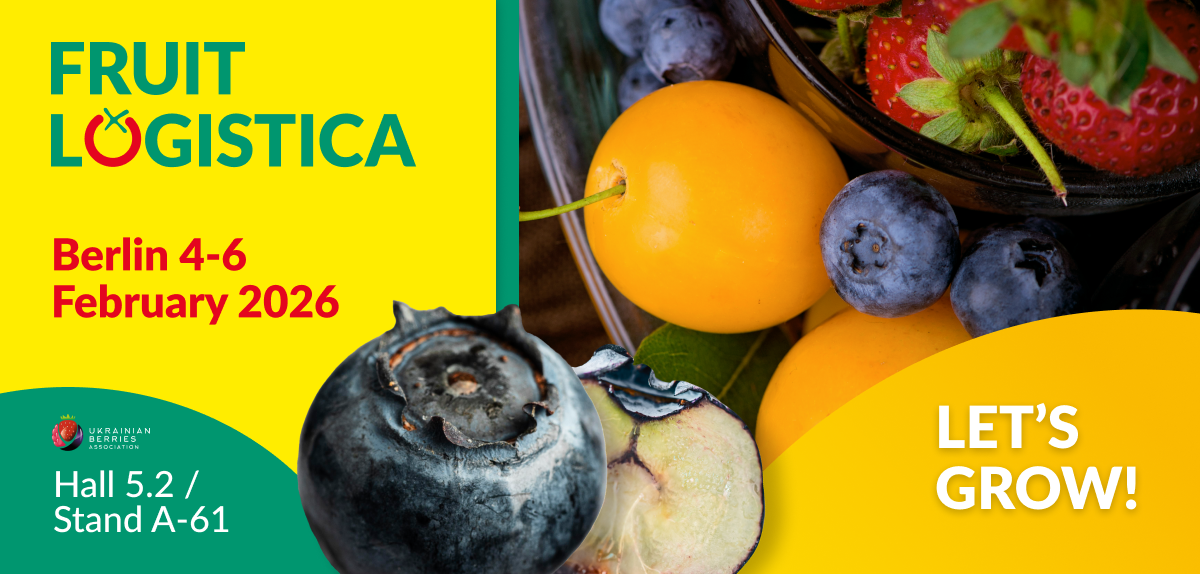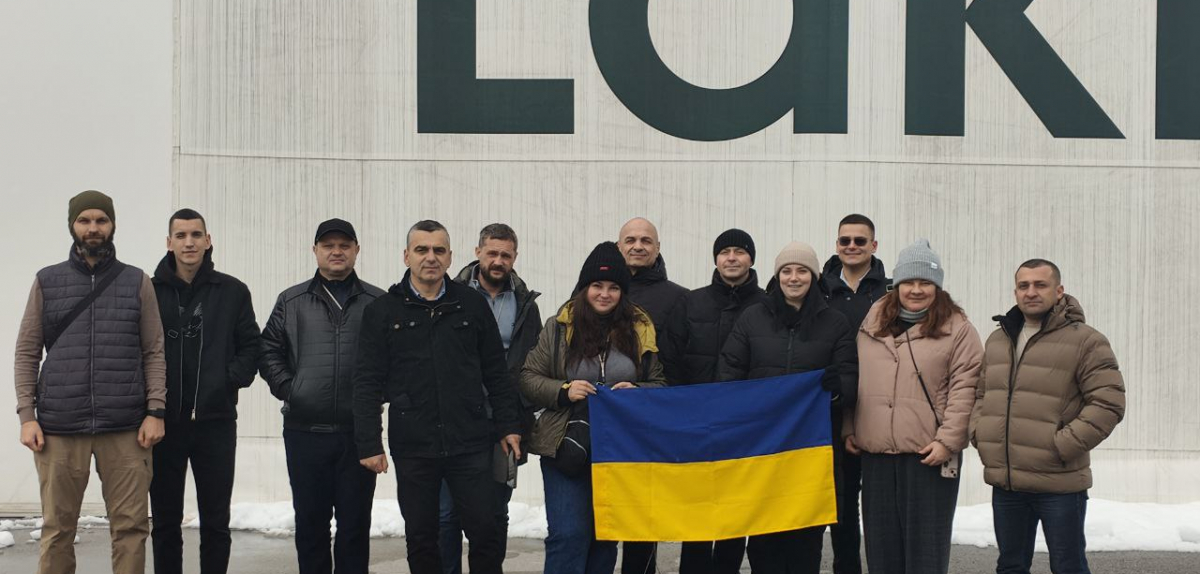
Tunnel greenhouses for early berries: features of growing raspberries, strawberries, and other crops — Examples from Polish farms

On August 7, Ukrainian berry growers and specialists of Ukrainian Berries Association participated in business tour to the Polish farms cultivating remontant (everbearing) varieties of raspberry, blackberry, and garden strawberry. These farms use products from Haygrove (a tunnel greenhouse manufacturer) and Ceres (a leading supplier of substrates, materials, and equipment for nurseries and greenhouses).
The event was organized by Haygrove company, aiming for an exchange of experience with Ukrainian partners and the study of innovative berries growing technologies. During the tour, participants visited two farms near the town of Płońsk, where they became acquainted with various aspects of tunnel cultivation of remontant raspberry, garden strawberry, and blackberry, focusing on the advantages of growing in tunnel greenhouses of different configurations, specifics of ventilation, and other aspects of crop care.
When speaking about the advantages of tunnel greenhouse cultivation over open-field farming, representatives of Haygrove emphasized that this method allows the extension of the harvest season (berries in tunnels ripen earlier in spring and later in autumn) and enables two harvest waves for remontant varieties (especially relevant for raspberries). The berries produced in this way are high quality with an appealing commercial appearance.
“Thus, there is an opportunity to bring product to the market in the off‑season, when the price is higher,” the representative of company noted.

Other advantages include:
- Protection from adverse weather conditions: rain, hail, strong wind, spring and autumn frosts.
- Better control of humidity and microclimate: irrigation, ventilation, temperature can be regulated, reducing the risk of diseases caused by excessive moisture or stress.
“Maintaining a constant temperature in the greenhouse is very important for high yields, and this is provided by the tunnel method, in which greenhouse height reaches 5.5–6 meters. Wind protection is also important, especially for raspberries to prevent damages of the fruit.
Thus, the technology gives us better berry quality and higher yields: 1.5–2 times higher than on open areas.”
One of the most important factors providing a stable microclimate in the tunnels is equipping greenhouses with efficient ventilation systems (a system patented by Haygrove).
In Haygrove tunnel greenhouses, two ventilation systems are used: EZvent (mechanized, with the possibility of manual control or with electric drive) and Total Vent (fully mechanized, programmable).
The main feature of the EZvent-bend system is that the ventilation termination point is located approximately 2 meters above the tunnel arch. The system is flexible in use, as it can operate either manually or with an electric drive.
“We can ventilate manually on smaller production sites. But quickly and effectively manual ventilation is impossible on the areas 2+ hectares. That’s where we use EZvent with an electric drive. Managers can control the process directly from their smartphones, so we don’t need many workers, whose luck we feel now, especially due to the inability of Ukrainian men to go abroad,” commented Haygrove expert.
“If daily ventilation is applied from the start of the season, yield can increase by up to 15%. It’s important that the tunnel be as tall as possible (around 5.5–6 meters), for consistent temperature maintenance.”
Regarding structural reliability, it was noted that 5–6 years ago a technology using oval tubes was developed: this structure is quite strong, which enables building tall tunnels. Inside each arch, metal cables are fastened, and the greenhouse can withstand wind speeds up to 100–120 km/h. The EZvent system is used for raspberries and garden strawberries. It works especially well with raspberries, protecting them well from wind so that the fruit remains undamaged.

The other ventilation system, Total Vent, is mainly used for cherries and blueberries. This is a fully retractable tunnel greenhouse design developed for precise climate control inside: its roof can fully lift for effective release of hot, humid air that tends to rise.
Other advantages of the system include:
- Complete retraction of the tunnel film to the ridge—allowing maximum use of natural light and ventilation.
- Energy efficiency: minimal electric drives, reducing operational costs over large areas.
- Lower disease risk: improved ventilation prevents moisture buildup and fungal diseases.
- Tunnel width up to 10 meters: significantly more than standard tunnels—allowing higher planting density and yield.
- Increased planting density and rapid payback due to optimized growing conditions.
- Automation and labor savings.
In addition to programmable ventilation, the system optimizes pollinator access, which positively affects the yield of flowering and fruit–berry crops. Moreover, it provides the possibility to collect rainwater (in case of forecasted rain, the system enables using the covering as a water-collecting surface).
During the visit, participants also learned about other aspects of growing raspberries and garden strawberries. Experts from Ceres, who supply substrates and various greenhouse equipment, addressed topics such as:
- Growing raspberries and blackberries in pots, and strawberries on raised tables.
- Coconut substrate, tunnel systems, and structure types.
- Pruning, plant protection, fertilization, organic models.
- Irrigation and fertigation systems.
- Harvesting, sorting, packaging, and logistics.
The Ceres company noted they are the first and only large-scale producer of coconut fiber–based substrates in Poland. They have their own technology for cleaning coconut fiber, supplying fully ready substrate to farms.
This substrate has several benefits:
- Excess water drains easily, avoiding waterlogging and oxygen shortage at the roots.
- Even after drying, the fiber rehydrates easily—it doesn’t become hydrophobic.
- Durability due to high lignin content, which decomposes slowly.
- Sterility and absence of weed seeds—no need for extra disinfection.
In addition, a Ceres expert discussed accessories and plastic containers offered by the company and demonstrated substrate samples.
“We are grateful to our partners for the invitation and such a great opportunity to increase expertise in tunnel greenhouse growing of garden crops. As we can see, Ukraine’s climate is rapidly changing toward global warming, which means even small farms are already using greenhouse cultivation because open-field conditions can no longer provide comfortable conditions with sufficient moisture for the plants. Ukrainian berry growing is confidently wides to the global markets, which is inseparable from the need to improve technologies. So our Polish colleagues’ experience was extremely useful and practical. We not only saw ready-made solutions, but learned how they work under real conditions. We hope for further cooperation with our dear partners,” shared Liubov Bilobrukh, Executive Director of the Ukrainian Berries Association.

 En
En  Укр
Укр 


